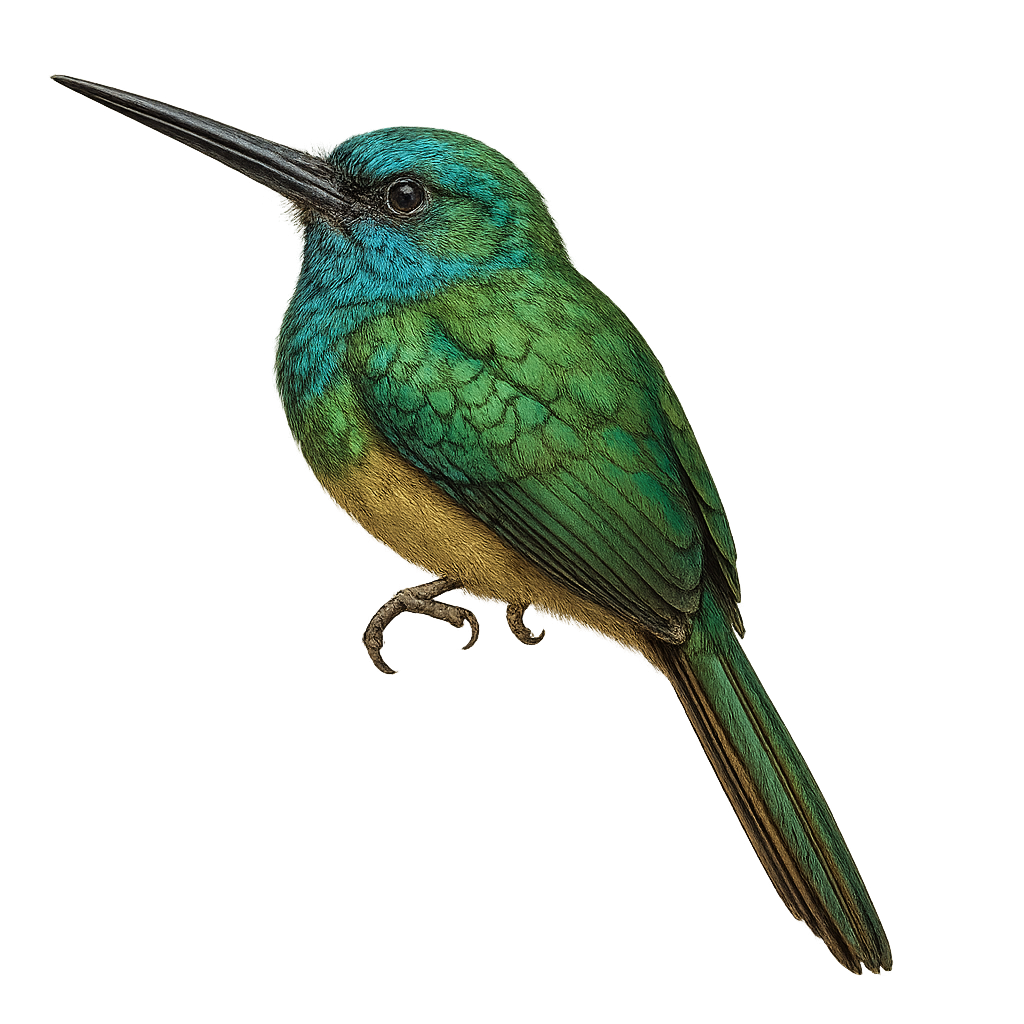Your wildlife photography guide.
Explore the bluish-fronted jacamar in detail, study its behavior, prepare your shots.
Where to observe and photograph the bluish-fronted jacamar in the wild
Learn where and when to spot the bluish-fronted jacamar in the wild, how to identify the species based on distinctive features, and what natural environments it inhabits. The WildlifePhotographer app offers tailored photography tips that reflect the bluish-fronted jacamar’s behavior, helping you capture better wildlife images. Explore the full species profile for key information including description, habitat, active periods, and approach techniques.
Bluish-fronted Jacamar
Scientific name: Galbula cyanescens

IUCN Status: Least Concern
Family: GALBULIDAE
Group: Birds
Sensitivity to human approach: Suspicious
Minimum approach distance: 10 m
Courtship display: December to January
Incubation: 20-22 jours
Hatchings: December to February
Habitat:
Tropical rainforests, forest edges, wooded areas
Activity period :
Primarily active during the day, with peak activity in the morning and late afternoon.
Identification and description:
The Bluish-fronted Jacamar, scientifically known as Galbula cyanescens, is a captivating bird from the Galbulidae family. It is primarily found in the humid tropical forests of South America, particularly in Brazil and Bolivia. This bird is distinguished by its striking plumage, featuring shades of blue and green that catch the sunlight. It measures about 18 to 20 cm in length and has a long, slender beak, perfect for catching insects in flight. The Bluish-fronted Jacamar is often seen perched on branches, patiently watching for prey. Although relatively discreet, its melodious song can be heard throughout the canopy. It plays a crucial role in the ecosystem by regulating insect populations.
Recommended lens:
400 mm – adjust based on distance, desired framing (portrait or habitat), and approach conditions.
Photography tips:
To photograph the Bluish-fronted Jacamar, it is advisable to use a 400mm lens or longer to capture the details of its striking plumage. Look for it in tropical rainforests, where it often perches on branches at the forest edge. Be patient and discreet, as this bird can be suspicious. Early morning hours are best to take advantage of soft, natural light. Use a tripod to avoid motion blur and be ready to adjust your position to follow its quick movements while hunting insects.
The WildlifePhotographer App is coming soon!
Be the first to explore the best nature spots, track rutting seasons, log your observations, and observe more wildlife.
Already 1 429 wildlife lovers subscribed worldwide

